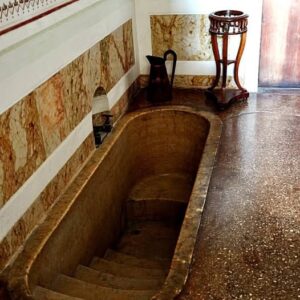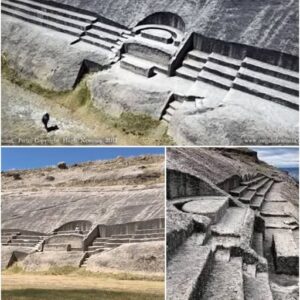Nestled on the slopes of Bulbul Mountain near the iconic Temple of Hadrian, the terrace houses of Ephesus offer a fascinating glimpse into the luxurious lifestyles enjoyed by the Roman elite. Known colloquially as “the houses of the rich,” these opulent dwellings are thought to have been constructed between the 1st century BCE and the 7th century CE. Designed in harmony with the city’s Hippodamian grid plan, these residences feature intricate details such as elaborate mosaics, frescoed walls, and sophisticated architectural elements.
Comprising six individual units spread across three terraces, these structures provide valuable insights into both Roman familial life and urban planning practices. The arrangement of the houses showcases the complex interplay between private living spaces and communal areas, highlighting the importance of social connections and hierarchical structures in Roman society.

The meticulous craftsmanship displayed in the mosaics and frescoes adorning the walls of the terrace houses speaks volumes about the artistic prowess of the time. Intricate patterns and vibrant colors come together to create a visual symphony that reflects the wealth and taste of the inhabitants. These decorative elements not only served an aesthetic purpose but also carried symbolic meanings, depicting scenes from daily life, mythical tales, and religious motifs.
The architectural layout of the terrace houses further underscores the sophisticated urban design principles employed in Ephesus. From the interconnected rooms and courtyards to the water distribution systems and heating mechanisms, every aspect of the houses was meticulously planned to ensure comfort, functionality, and elegance.
Exploring the terrace houses of Ephesus is like stepping back in time and immersing oneself in the lavish world of the Roman elite. As you wander through the well-preserved ruins, you can’t help but marvel at the ingenuity and creativity that went into creating these architectural marvels. Each corner reveals a new facet of Roman life, inviting you to ponder the legacy of these remarkable structures that have stood the test of time.
In conclusion, the terrace houses of Ephesus stand as a testament to the wealth, sophistication, and cultural richness of ancient Rome. Through their intricate design, elaborate decorations, and strategic layout, these houses offer a compelling narrative of a bygone era, illuminating the complexities of Roman society and the enduring legacy of its architectural heritage.





